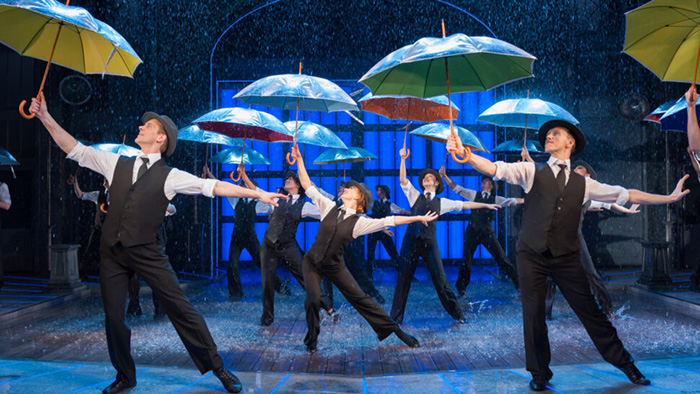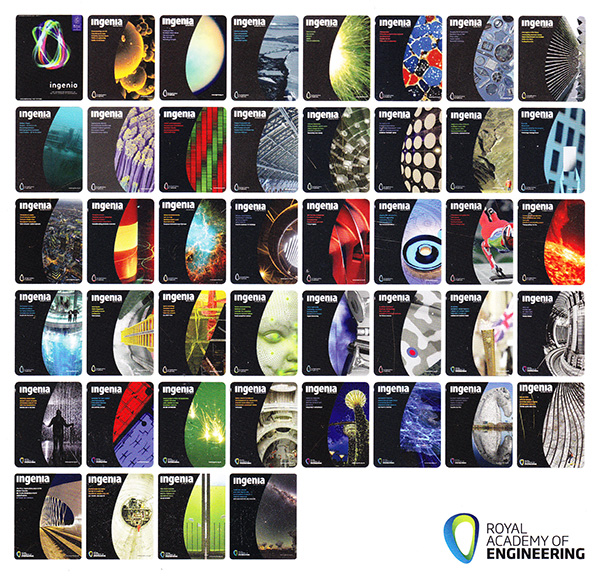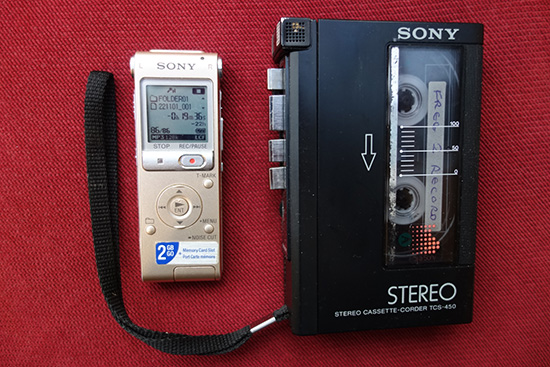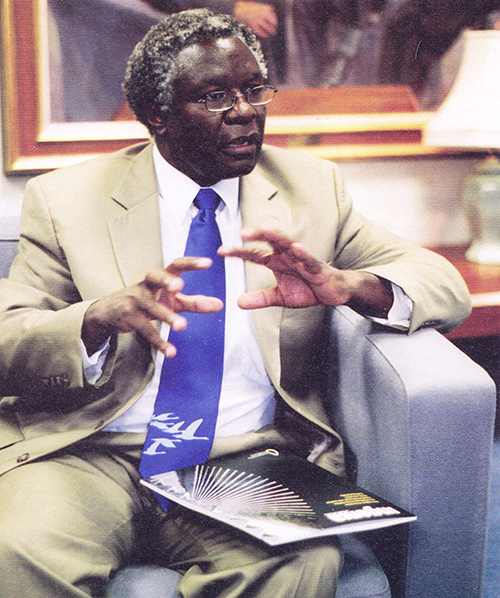
In 2020, I wrote an article on the engineering that enabled the rain effects for Chichester Theatre's production of 'Singin' in the Rain' © Jonathan Church Theatre Productions
Writing for Ingenia
It's a darn sight easier writing articles for Ingenia than editing the magazine, I can tell you!
I did the latter for 11 years, among my other web editorial and publication tasks for the Academy. It was a full-on juggling act. Looking back, I have no idea how two of us managed to find content, retain four big corporate sponsors, re-write, proof and publish four 60-page copies a year, while overseeing Academy branding, its websites and publications.
Now, it's a joy to be given a topic and let loose on a single article. I enjoy researching and immersing myself in the subject. I usually collect about 20 pages of solid notes before I interview the one, two or three people who will complete the content of an article.
Now and then. These two Sony recording devices have carried out hundreds of interviews between them over the last 35 years. I usually plugged in an outside mike to the Walkman but the IC Recorder picks up pretty much anything, anywhere.
The task is so much easier than when I started writing articles 40 years' ago. Back then, it would take weeks to discover what Google will tell me in a matter of hours. In the 1980s, I would visit the reference section of my local library in Bedford - open 9.30 to 5.30pm, Monday to Friday only - and seek out books or newspaper articles. I would then track down the relevant companies or personalities and use the Yellow Pages to find their address or number. A nightmare, if weeks of research ended in the discovery that my protagonists were dead or unwilling to talk.
Nowadays, the first thing I say to my interviewee is, "I am not an engineer" and that I'm writing for a diverse audience who, most probably, will not be up-to-speed with the jargon or minutiae of their engineering specialisation. I ask them to imagine that they're talking to a 16-year-old with an interest for engineering. This works most of the time, and if we need to drill down on some precise explanations of the innovative technology, then I know that I can box that section off so that it will not interrupt the flow of the article.
I don't have a camera on my 10-year-old computer screen and so my interviews are done by phone or Skype. I am more comfortable doing them this way. I can focus entirely on my responses, rather than getting distracted by appearances.
I transcribe the interviews the old-fashioned way. A 25-minute interview will take a couple of hours for me to type up. But that's fine, it enables me to absorb the new information and research any words or concepts that I don't recognise, as I go along.
Writing the actual article can take a while. I re-read the thousands of words of notes I've collated, and then go for walks trying to figure out the main areas I will cover and the order to put them in. When I write, I start at the beginning and work through to the end, in exactly the order that it will eventually be published.
Along the way, I look for the accompanying pictures and caption them. Not all writers do that, but I used to be an editor, so I construct the piece visually as I write the 2-3,000 words. I'll work on the completed text for a couple of days and refine it - until I can't tweak anymore. I then submit to Gemma, the Managing Editor of Ingenia, and she will then show it to the Editorial Board made up of some of the top UK engineers. We await their comments and with a bit of luck, they will only ask for clarification on a couple of points.
After all that, it's a great feeling to see the finished article laid out with the designer's flourish. A new magazine lands on the mat and it smells brand new - a mixture of printer's ink and of the laminate that's been used for the cover.

The Fellows on the Ingenia Editorial Board kindly made up this leaving card and signed it. It shows the front covers of all the quarterly editions I edited over 11 years.

